 SUMMARY
The different concepts that appear in a price list of laminated materials supplied by the steel industry are analyzed, indicating the reasons for surcharge or decrease in the price of the product.
INTRODUCTION
The steel mills that manufacture coated cold rolled or not, make available to their potential customers, basic rates of sale price of these materials. They are usually quite complex, because the final price of sale of the product depends on different elements such as: thickness, coating, surface dimensions, hardness …, without forgetting the rappels or discounts that can be obtained depending on consumption.
Without pretending to be exhaustive, we will give some notions of the most common factors, which usually determine the final price of a steel coated or not, cold rolled. We will begin by defining what is understood by this type of material.
DEFINITIONS
Electrolytic tinplate:
Flat product made of cold rolled steel, with a width equal to or greater than 525 mm., Thickness equal to or less than 0.50 mm., And with both sides coated with tin by an electrolytic process.
Prepared sheet:
Flat product of cold rolled steel, low carbon content, not tinned, normally not oiled or treated by another procedure, of dimensions common to the previous point.
Chromed sheet:
Flat product of cold rolled steel, low carbon content, covered with chromium and chromium oxides by means of an electrolytic process on both sides.
BASE PRICE
Every price tariff starts from a base price, which is then added to other addends (positive or negative) depending on the different characteristics of the material.
This price or base rate is a list of the different thicknesses that the steel industry offers, normally from 0, 14 to 0.50 mm., In which for each one of them a base amount is given, expressed in a monetary unit (dollars, euros , pounds, et) for each site.
The sita is the unit of measurement on the surface of cold rolled materials, and is equal to 100 square meters (System Internacioinal Timplate Area). Equivalent to 4,943 base boxes or 5,537 European base boxes. To know the meaning of base box and European base box you can see our glossary of terms.
Therefore, as a summary, the starting data to determine the price of a tin plate is its thickness. Entering with him in the base rate table will have a first price, which will then be added supplements or extras.
EXTRAS BY COATING
Non-differential coatings
In tinplate with equal tin coating on both sides, depending on the amount applied, an extra price is added to the base. There is a recession in which the extra is zero. Normally this is 2.8 / 2.8 gr / m2. The smaller coatings have a price reduction on the base, and the higher ones an increase. Thus, for example, moving from a 2.8 / 2.8 coating (without extras) to 5.6 / 5.6, may represent an increase of approximately 3%, although it is a function of the variation in the price of tin which is fluctuating.
The prepared sheet, which does not carry tin, is the one with the greatest reduction
The amounts of the extras appear in the rates also valued per site or 100 m2.
Differential coatings
In the case of sheets of different coating on each side, the same criterion is also applied, although the list of possible options is much higher, generally starting with a coating 0 / 2.8 and ending at 11.2 / 15.1 g / m2
In this case the option of extra zero is usually 1.4 / 4.0 or 2.24 / 3.36 gr / m2.
WE FEED IN PERCENTAGES TO CALCULATE THE RATE
The rest of extras or complements for other concepts, are applied from here in percentage form, and on the sum of the base price for thickness plus the extra for tin coating. Therefore, it is about adding to the value of a site (100 m2) obtained previously, a percentage for each new factor.
Dimensions
As indicated above, based on certain surface dimensions of the material, new percentage increases or decreases are applied.
Width
There is a base range, for example between 745 to 839 mm, inside which there is no extra. Below it, an important surcharge appears, which can reach up to 15%, for widths close to 550 mm, and a rebate for higher widths that reaches up to 2%.
These extras are applicable for both coil and sheet supply.
Cut in sheets
In the case of sheet supply, it is necessary to cut at a certain length, which in turn is affected by a surcharge for small dimensions.
Dimensional tolerances
In general, the tolerances defined by national or international regulations that are in force apply for the supply of materials. If these standards are required or required, this always carries a surcharge to negotiate in each specific case.
Physicochemical characteristics
Within this concept you enter the mechanical properties (hardness, directionality …) and chemical properties as steel composition.
Special qualities
The steel industry can request a% increase when special qualities are demanded. These can be motivated by a certain particular use, such as: easy opening covers, special embutitions …
For tinplates with a wide field of use such as the reduced double type, two-piece containers, etc. there is no surcharge.
Mechanical characteristics
This section focuses on the hardness of the material. The base price of the tinplate is applied to tempers III and IV, with the remaining surcharges, being higher when they are lower.
Chemical characteristics anticorrosive
Any limitation in the chemical composition or in anticorrosive demands, carries an extra, normally negotiated.
Finish
The most used finishes: bright, matt, stone and mirror, do not carry an extra. Other specials such as silver, does incorporate it.
Weight of packages
When the supply is in the form of sheets, if any limitation in weight is required for the manufacture of the units to be supplied, higher surcharges apply the smaller the tonnage of the package.
The base price is around one and a half tons. The increase can reach 5% for packages close to 0.5 tons.
Packaging
The steel mills offer different types of packaging, which are a function of the type of transport to which the material is subjected. This can be the proximity or regional, export, maritime and other special.
The first type is included in the base price, any other is a cost increase, which may involve several added points.
Order or quantity
The size of the order also affects the final price. It is usually defined according to the total area of the same, although some steel mills measure it by tonnage.
From 50,000 m2, orders have no surcharge for quantity. They can even have a discount for important volumes. The steel mills usually set a minimum amount to ask for any type of material.
A single order means the total quantity of a measure (a thickness, a width and length in a single format), a coating, a finish, a degree of hardness, for a single destination, and to supply in the course of a short period of time (for example: one month).
WE FEED IN PERCENTAGES FOR THE FINAL CALCULATION
On the sum of the percentages calculated in the previous sections, the manufacturers apply complementary bars, such as the following.
Surface appearance
The iron and steel industry generates a certain quantity of material of second quality with each order that is supplied in packages. These products properly packaged and identified, can be offered, at a certain percentage of the total order, at discounted prices.
This price reduction is different depending on the type of material, being higher for the prepared sheet.
Coils
If the order is served in the form of coils, an important bonus is applied, usually 5%, to the final price of the product. This bonus applies regardless of the weight limited by the customer for each supply unit.
SUMMARY
The different concepts that appear in a price list of laminated materials supplied by the steel industry are analyzed, indicating the reasons for surcharge or decrease in the price of the product.
INTRODUCTION
The steel mills that manufacture coated cold rolled or not, make available to their potential customers, basic rates of sale price of these materials. They are usually quite complex, because the final price of sale of the product depends on different elements such as: thickness, coating, surface dimensions, hardness …, without forgetting the rappels or discounts that can be obtained depending on consumption.
Without pretending to be exhaustive, we will give some notions of the most common factors, which usually determine the final price of a steel coated or not, cold rolled. We will begin by defining what is understood by this type of material.
DEFINITIONS
Electrolytic tinplate:
Flat product made of cold rolled steel, with a width equal to or greater than 525 mm., Thickness equal to or less than 0.50 mm., And with both sides coated with tin by an electrolytic process.
Prepared sheet:
Flat product of cold rolled steel, low carbon content, not tinned, normally not oiled or treated by another procedure, of dimensions common to the previous point.
Chromed sheet:
Flat product of cold rolled steel, low carbon content, covered with chromium and chromium oxides by means of an electrolytic process on both sides.
BASE PRICE
Every price tariff starts from a base price, which is then added to other addends (positive or negative) depending on the different characteristics of the material.
This price or base rate is a list of the different thicknesses that the steel industry offers, normally from 0, 14 to 0.50 mm., In which for each one of them a base amount is given, expressed in a monetary unit (dollars, euros , pounds, et) for each site.
The sita is the unit of measurement on the surface of cold rolled materials, and is equal to 100 square meters (System Internacioinal Timplate Area). Equivalent to 4,943 base boxes or 5,537 European base boxes. To know the meaning of base box and European base box you can see our glossary of terms.
Therefore, as a summary, the starting data to determine the price of a tin plate is its thickness. Entering with him in the base rate table will have a first price, which will then be added supplements or extras.
EXTRAS BY COATING
Non-differential coatings
In tinplate with equal tin coating on both sides, depending on the amount applied, an extra price is added to the base. There is a recession in which the extra is zero. Normally this is 2.8 / 2.8 gr / m2. The smaller coatings have a price reduction on the base, and the higher ones an increase. Thus, for example, moving from a 2.8 / 2.8 coating (without extras) to 5.6 / 5.6, may represent an increase of approximately 3%, although it is a function of the variation in the price of tin which is fluctuating.
The prepared sheet, which does not carry tin, is the one with the greatest reduction
The amounts of the extras appear in the rates also valued per site or 100 m2.
Differential coatings
In the case of sheets of different coating on each side, the same criterion is also applied, although the list of possible options is much higher, generally starting with a coating 0 / 2.8 and ending at 11.2 / 15.1 g / m2
In this case the option of extra zero is usually 1.4 / 4.0 or 2.24 / 3.36 gr / m2.
WE FEED IN PERCENTAGES TO CALCULATE THE RATE
The rest of extras or complements for other concepts, are applied from here in percentage form, and on the sum of the base price for thickness plus the extra for tin coating. Therefore, it is about adding to the value of a site (100 m2) obtained previously, a percentage for each new factor.
Dimensions
As indicated above, based on certain surface dimensions of the material, new percentage increases or decreases are applied.
Width
There is a base range, for example between 745 to 839 mm, inside which there is no extra. Below it, an important surcharge appears, which can reach up to 15%, for widths close to 550 mm, and a rebate for higher widths that reaches up to 2%.
These extras are applicable for both coil and sheet supply.
Cut in sheets
In the case of sheet supply, it is necessary to cut at a certain length, which in turn is affected by a surcharge for small dimensions.
Dimensional tolerances
In general, the tolerances defined by national or international regulations that are in force apply for the supply of materials. If these standards are required or required, this always carries a surcharge to negotiate in each specific case.
Physicochemical characteristics
Within this concept you enter the mechanical properties (hardness, directionality …) and chemical properties as steel composition.
Special qualities
The steel industry can request a% increase when special qualities are demanded. These can be motivated by a certain particular use, such as: easy opening covers, special embutitions …
For tinplates with a wide field of use such as the reduced double type, two-piece containers, etc. there is no surcharge.
Mechanical characteristics
This section focuses on the hardness of the material. The base price of the tinplate is applied to tempers III and IV, with the remaining surcharges, being higher when they are lower.
Chemical characteristics anticorrosive
Any limitation in the chemical composition or in anticorrosive demands, carries an extra, normally negotiated.
Finish
The most used finishes: bright, matt, stone and mirror, do not carry an extra. Other specials such as silver, does incorporate it.
Weight of packages
When the supply is in the form of sheets, if any limitation in weight is required for the manufacture of the units to be supplied, higher surcharges apply the smaller the tonnage of the package.
The base price is around one and a half tons. The increase can reach 5% for packages close to 0.5 tons.
Packaging
The steel mills offer different types of packaging, which are a function of the type of transport to which the material is subjected. This can be the proximity or regional, export, maritime and other special.
The first type is included in the base price, any other is a cost increase, which may involve several added points.
Order or quantity
The size of the order also affects the final price. It is usually defined according to the total area of the same, although some steel mills measure it by tonnage.
From 50,000 m2, orders have no surcharge for quantity. They can even have a discount for important volumes. The steel mills usually set a minimum amount to ask for any type of material.
A single order means the total quantity of a measure (a thickness, a width and length in a single format), a coating, a finish, a degree of hardness, for a single destination, and to supply in the course of a short period of time (for example: one month).
WE FEED IN PERCENTAGES FOR THE FINAL CALCULATION
On the sum of the percentages calculated in the previous sections, the manufacturers apply complementary bars, such as the following.
Surface appearance
The iron and steel industry generates a certain quantity of material of second quality with each order that is supplied in packages. These products properly packaged and identified, can be offered, at a certain percentage of the total order, at discounted prices.
This price reduction is different depending on the type of material, being higher for the prepared sheet.
Coils
If the order is served in the form of coils, an important bonus is applied, usually 5%, to the final price of the product. This bonus applies regardless of the weight limited by the customer for each supply unit.RAW MATERIALS
Información TécnicaRATE OF MATERIALS LAMINATES

 SUMMARY
The different concepts that appear in a price list of laminated materials supplied by the steel industry are analyzed, indicating the reasons for surcharge or decrease in the price of the product.
INTRODUCTION
The steel mills that manufacture coated cold rolled or not, make available to their potential customers, basic rates of sale price of these materials. They are usually quite complex, because the final price of sale of the product depends on different elements such as: thickness, coating, surface dimensions, hardness …, without forgetting the rappels or discounts that can be obtained depending on consumption.
Without pretending to be exhaustive, we will give some notions of the most common factors, which usually determine the final price of a steel coated or not, cold rolled. We will begin by defining what is understood by this type of material.
DEFINITIONS
Electrolytic tinplate:
Flat product made of cold rolled steel, with a width equal to or greater than 525 mm., Thickness equal to or less than 0.50 mm., And with both sides coated with tin by an electrolytic process.
Prepared sheet:
Flat product of cold rolled steel, low carbon content, not tinned, normally not oiled or treated by another procedure, of dimensions common to the previous point.
Chromed sheet:
Flat product of cold rolled steel, low carbon content, covered with chromium and chromium oxides by means of an electrolytic process on both sides.
BASE PRICE
Every price tariff starts from a base price, which is then added to other addends (positive or negative) depending on the different characteristics of the material.
This price or base rate is a list of the different thicknesses that the steel industry offers, normally from 0, 14 to 0.50 mm., In which for each one of them a base amount is given, expressed in a monetary unit (dollars, euros , pounds, et) for each site.
The sita is the unit of measurement on the surface of cold rolled materials, and is equal to 100 square meters (System Internacioinal Timplate Area). Equivalent to 4,943 base boxes or 5,537 European base boxes. To know the meaning of base box and European base box you can see our glossary of terms.
Therefore, as a summary, the starting data to determine the price of a tin plate is its thickness. Entering with him in the base rate table will have a first price, which will then be added supplements or extras.
EXTRAS BY COATING
Non-differential coatings
In tinplate with equal tin coating on both sides, depending on the amount applied, an extra price is added to the base. There is a recession in which the extra is zero. Normally this is 2.8 / 2.8 gr / m2. The smaller coatings have a price reduction on the base, and the higher ones an increase. Thus, for example, moving from a 2.8 / 2.8 coating (without extras) to 5.6 / 5.6, may represent an increase of approximately 3%, although it is a function of the variation in the price of tin which is fluctuating.
The prepared sheet, which does not carry tin, is the one with the greatest reduction
The amounts of the extras appear in the rates also valued per site or 100 m2.
Differential coatings
In the case of sheets of different coating on each side, the same criterion is also applied, although the list of possible options is much higher, generally starting with a coating 0 / 2.8 and ending at 11.2 / 15.1 g / m2
In this case the option of extra zero is usually 1.4 / 4.0 or 2.24 / 3.36 gr / m2.
WE FEED IN PERCENTAGES TO CALCULATE THE RATE
The rest of extras or complements for other concepts, are applied from here in percentage form, and on the sum of the base price for thickness plus the extra for tin coating. Therefore, it is about adding to the value of a site (100 m2) obtained previously, a percentage for each new factor.
Dimensions
As indicated above, based on certain surface dimensions of the material, new percentage increases or decreases are applied.
Width
There is a base range, for example between 745 to 839 mm, inside which there is no extra. Below it, an important surcharge appears, which can reach up to 15%, for widths close to 550 mm, and a rebate for higher widths that reaches up to 2%.
These extras are applicable for both coil and sheet supply.
Cut in sheets
In the case of sheet supply, it is necessary to cut at a certain length, which in turn is affected by a surcharge for small dimensions.
Dimensional tolerances
In general, the tolerances defined by national or international regulations that are in force apply for the supply of materials. If these standards are required or required, this always carries a surcharge to negotiate in each specific case.
Physicochemical characteristics
Within this concept you enter the mechanical properties (hardness, directionality …) and chemical properties as steel composition.
Special qualities
The steel industry can request a% increase when special qualities are demanded. These can be motivated by a certain particular use, such as: easy opening covers, special embutitions …
For tinplates with a wide field of use such as the reduced double type, two-piece containers, etc. there is no surcharge.
Mechanical characteristics
This section focuses on the hardness of the material. The base price of the tinplate is applied to tempers III and IV, with the remaining surcharges, being higher when they are lower.
Chemical characteristics anticorrosive
Any limitation in the chemical composition or in anticorrosive demands, carries an extra, normally negotiated.
Finish
The most used finishes: bright, matt, stone and mirror, do not carry an extra. Other specials such as silver, does incorporate it.
Weight of packages
When the supply is in the form of sheets, if any limitation in weight is required for the manufacture of the units to be supplied, higher surcharges apply the smaller the tonnage of the package.
The base price is around one and a half tons. The increase can reach 5% for packages close to 0.5 tons.
Packaging
The steel mills offer different types of packaging, which are a function of the type of transport to which the material is subjected. This can be the proximity or regional, export, maritime and other special.
The first type is included in the base price, any other is a cost increase, which may involve several added points.
Order or quantity
The size of the order also affects the final price. It is usually defined according to the total area of the same, although some steel mills measure it by tonnage.
From 50,000 m2, orders have no surcharge for quantity. They can even have a discount for important volumes. The steel mills usually set a minimum amount to ask for any type of material.
A single order means the total quantity of a measure (a thickness, a width and length in a single format), a coating, a finish, a degree of hardness, for a single destination, and to supply in the course of a short period of time (for example: one month).
WE FEED IN PERCENTAGES FOR THE FINAL CALCULATION
On the sum of the percentages calculated in the previous sections, the manufacturers apply complementary bars, such as the following.
Surface appearance
The iron and steel industry generates a certain quantity of material of second quality with each order that is supplied in packages. These products properly packaged and identified, can be offered, at a certain percentage of the total order, at discounted prices.
This price reduction is different depending on the type of material, being higher for the prepared sheet.
Coils
If the order is served in the form of coils, an important bonus is applied, usually 5%, to the final price of the product. This bonus applies regardless of the weight limited by the customer for each supply unit.
SUMMARY
The different concepts that appear in a price list of laminated materials supplied by the steel industry are analyzed, indicating the reasons for surcharge or decrease in the price of the product.
INTRODUCTION
The steel mills that manufacture coated cold rolled or not, make available to their potential customers, basic rates of sale price of these materials. They are usually quite complex, because the final price of sale of the product depends on different elements such as: thickness, coating, surface dimensions, hardness …, without forgetting the rappels or discounts that can be obtained depending on consumption.
Without pretending to be exhaustive, we will give some notions of the most common factors, which usually determine the final price of a steel coated or not, cold rolled. We will begin by defining what is understood by this type of material.
DEFINITIONS
Electrolytic tinplate:
Flat product made of cold rolled steel, with a width equal to or greater than 525 mm., Thickness equal to or less than 0.50 mm., And with both sides coated with tin by an electrolytic process.
Prepared sheet:
Flat product of cold rolled steel, low carbon content, not tinned, normally not oiled or treated by another procedure, of dimensions common to the previous point.
Chromed sheet:
Flat product of cold rolled steel, low carbon content, covered with chromium and chromium oxides by means of an electrolytic process on both sides.
BASE PRICE
Every price tariff starts from a base price, which is then added to other addends (positive or negative) depending on the different characteristics of the material.
This price or base rate is a list of the different thicknesses that the steel industry offers, normally from 0, 14 to 0.50 mm., In which for each one of them a base amount is given, expressed in a monetary unit (dollars, euros , pounds, et) for each site.
The sita is the unit of measurement on the surface of cold rolled materials, and is equal to 100 square meters (System Internacioinal Timplate Area). Equivalent to 4,943 base boxes or 5,537 European base boxes. To know the meaning of base box and European base box you can see our glossary of terms.
Therefore, as a summary, the starting data to determine the price of a tin plate is its thickness. Entering with him in the base rate table will have a first price, which will then be added supplements or extras.
EXTRAS BY COATING
Non-differential coatings
In tinplate with equal tin coating on both sides, depending on the amount applied, an extra price is added to the base. There is a recession in which the extra is zero. Normally this is 2.8 / 2.8 gr / m2. The smaller coatings have a price reduction on the base, and the higher ones an increase. Thus, for example, moving from a 2.8 / 2.8 coating (without extras) to 5.6 / 5.6, may represent an increase of approximately 3%, although it is a function of the variation in the price of tin which is fluctuating.
The prepared sheet, which does not carry tin, is the one with the greatest reduction
The amounts of the extras appear in the rates also valued per site or 100 m2.
Differential coatings
In the case of sheets of different coating on each side, the same criterion is also applied, although the list of possible options is much higher, generally starting with a coating 0 / 2.8 and ending at 11.2 / 15.1 g / m2
In this case the option of extra zero is usually 1.4 / 4.0 or 2.24 / 3.36 gr / m2.
WE FEED IN PERCENTAGES TO CALCULATE THE RATE
The rest of extras or complements for other concepts, are applied from here in percentage form, and on the sum of the base price for thickness plus the extra for tin coating. Therefore, it is about adding to the value of a site (100 m2) obtained previously, a percentage for each new factor.
Dimensions
As indicated above, based on certain surface dimensions of the material, new percentage increases or decreases are applied.
Width
There is a base range, for example between 745 to 839 mm, inside which there is no extra. Below it, an important surcharge appears, which can reach up to 15%, for widths close to 550 mm, and a rebate for higher widths that reaches up to 2%.
These extras are applicable for both coil and sheet supply.
Cut in sheets
In the case of sheet supply, it is necessary to cut at a certain length, which in turn is affected by a surcharge for small dimensions.
Dimensional tolerances
In general, the tolerances defined by national or international regulations that are in force apply for the supply of materials. If these standards are required or required, this always carries a surcharge to negotiate in each specific case.
Physicochemical characteristics
Within this concept you enter the mechanical properties (hardness, directionality …) and chemical properties as steel composition.
Special qualities
The steel industry can request a% increase when special qualities are demanded. These can be motivated by a certain particular use, such as: easy opening covers, special embutitions …
For tinplates with a wide field of use such as the reduced double type, two-piece containers, etc. there is no surcharge.
Mechanical characteristics
This section focuses on the hardness of the material. The base price of the tinplate is applied to tempers III and IV, with the remaining surcharges, being higher when they are lower.
Chemical characteristics anticorrosive
Any limitation in the chemical composition or in anticorrosive demands, carries an extra, normally negotiated.
Finish
The most used finishes: bright, matt, stone and mirror, do not carry an extra. Other specials such as silver, does incorporate it.
Weight of packages
When the supply is in the form of sheets, if any limitation in weight is required for the manufacture of the units to be supplied, higher surcharges apply the smaller the tonnage of the package.
The base price is around one and a half tons. The increase can reach 5% for packages close to 0.5 tons.
Packaging
The steel mills offer different types of packaging, which are a function of the type of transport to which the material is subjected. This can be the proximity or regional, export, maritime and other special.
The first type is included in the base price, any other is a cost increase, which may involve several added points.
Order or quantity
The size of the order also affects the final price. It is usually defined according to the total area of the same, although some steel mills measure it by tonnage.
From 50,000 m2, orders have no surcharge for quantity. They can even have a discount for important volumes. The steel mills usually set a minimum amount to ask for any type of material.
A single order means the total quantity of a measure (a thickness, a width and length in a single format), a coating, a finish, a degree of hardness, for a single destination, and to supply in the course of a short period of time (for example: one month).
WE FEED IN PERCENTAGES FOR THE FINAL CALCULATION
On the sum of the percentages calculated in the previous sections, the manufacturers apply complementary bars, such as the following.
Surface appearance
The iron and steel industry generates a certain quantity of material of second quality with each order that is supplied in packages. These products properly packaged and identified, can be offered, at a certain percentage of the total order, at discounted prices.
This price reduction is different depending on the type of material, being higher for the prepared sheet.
Coils
If the order is served in the form of coils, an important bonus is applied, usually 5%, to the final price of the product. This bonus applies regardless of the weight limited by the customer for each supply unit.
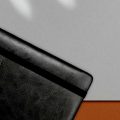
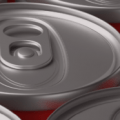



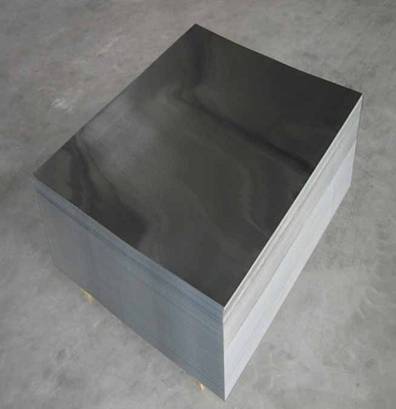
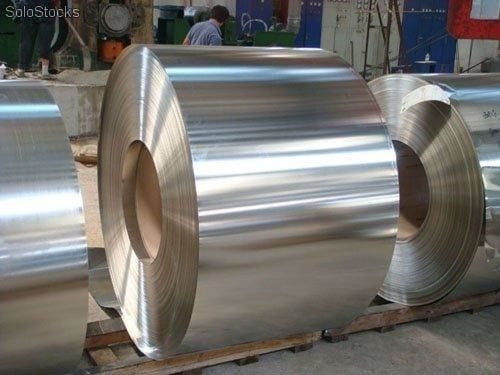
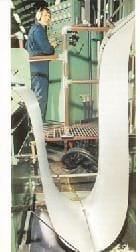
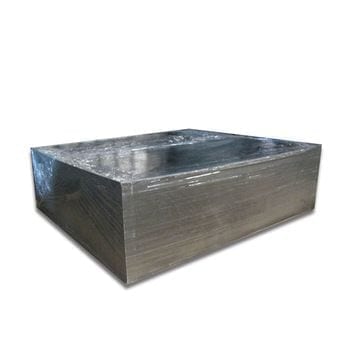
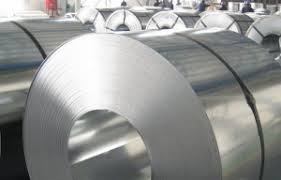



0 Comments